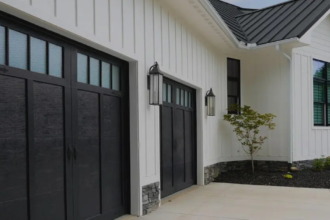Buying a home is one of life’s most significant milestones. It’s more than just a financial investment—it’s a place where you’ll build memories, create a sense of security, and put down roots.
- 1. Assess Your Financial Readiness: Budgeting for More Than Just the Mortgage
- 2. Get Pre-Approved: Understand Your Borrowing Power Early On
- 3. Define Your Must-Haves and Deal Breakers
- 4. Find the Right Team: Real Estate Professionals You Can Trust
- 5. Understand Your Financing Options: Making Your Money Work for You
- 6. Negotiate with Confidence: Secure the Best Deal
- 7. Think Long-Term: Is This Home Your Forever Home?
But for many, the home-buying process can feel overwhelming. Between budgeting, navigating the real estate market, and understanding financing options, it’s easy to feel unsure where to start.
Fortunately, with some planning and the right guidance, you can confidently approach this exciting journey. From setting a realistic budget to exploring financing options, we’ve compiled a comprehensive guide to help you make informed decisions every step of the way.
Whether you’re a first-time buyer or looking to upgrade your current home, these tips will ensure a smoother path to homeownership.
1. Assess Your Financial Readiness: Budgeting for More Than Just the Mortgage
The first step in buying a home is understanding your financial situation. How much can you truly afford?
While the mortgage payment is often top of mind, consider other costs like property taxes, homeowners insurance, maintenance, and potential HOA fees. Experts recommend that your monthly housing expenses should not exceed 28% of your gross income.
Start by creating a detailed budget. Calculate how much you’ve saved for a down payment and closing costs, then evaluate your monthly expenses to determine a comfortable price range. If you’re already a homeowner planning to upgrade, tapping into your home equity could be a smart way to finance the next step.
For instance, researching home equity loan rates in Oregon can help you unlock funds at competitive rates while keeping your financial goals intact.
2. Get Pre-Approved: Understand Your Borrowing Power Early On
Getting pre-approved for a mortgage is one of the most critical steps in the home-buying process.
This isn’t just about knowing what you qualify for—it’s about showing sellers that you’re a serious and capable buyer. Pre-approval clarifies how much a lender will loan you so you can focus on homes within your budget.
Pre-approval also gives you an edge in competitive markets. Sellers are more likely to accept offers from buyers who are pre-approved because it eliminates uncertainty.
Be prepared to gather essential documents, such as pay stubs, tax returns, and bank statements, to make the process quick and smooth.
3. Define Your Must-Haves and Deal Breakers
Knowing what you need versus what you want in a home is crucial to narrowing your options. Start by identifying your top priorities. How many bedrooms and bathrooms do you need? Is a large backyard or proximity to a good school district a priority? Consider your lifestyle and plans.
For example, a dedicated home office may be a must if you work remotely.
It’s easy to get caught up in the excitement of house hunting, but having a clear list of must-haves and deal breakers will help you stay focused.
Remember that no house is perfect, so understanding where you’re willing to compromise is key.
4. Find the Right Team: Real Estate Professionals You Can Trust
Buying a home is not a solo endeavor. Surrounding yourself with the right team of professionals can make all the difference.
Start by choosing a knowledgeable, experienced real estate agent who understands your local market. They’ll guide you through the process, from finding listings that meet your criteria to negotiating the best deal.
Don’t underestimate the importance of hiring a home inspector, too. They’ll ensure your potential new home is free of significant issues, like structural damage or outdated systems.
Together, your real estate agent, lender, and home inspector form a team that will have your best interests at heart.
5. Understand Your Financing Options: Making Your Money Work for You
When it comes to financing your home, there’s no one-size-fits-all solution. Most buyers rely on a mortgage, but it’s worth exploring other funding options to make the most of your money.
For example, if you already own property and want to move or invest, you might benefit from tapping into your home equity.
Taking the time to compare loans could give you access to additional funds for a down payment, renovations, or other expenses.
Understanding the pros and cons of these options will help you make an informed decision that aligns with your long-term financial goals.
6. Negotiate with Confidence: Secure the Best Deal
Negotiation is a key part of the home-buying process. Once you find a home you love, it’s time to make an offer. Research comparable sales in the area to determine a fair price, and work closely with your real estate agent to craft a compelling offer.
Don’t be afraid to ask for concessions, such as covering closing costs or making repairs before the sale is finalized. Sellers often expect some negotiation, and a reasonable counteroffer can sometimes save you thousands.
7. Think Long-Term: Is This Home Your Forever Home?
As you weigh your options, consider how the home will fit your needs in the future. Are you planning to expand your family? Will you need more space for hobbies or remote work? Thinking ahead can save you from outgrowing your home too quickly.
Even if this isn’t your “forever home,” consider its potential resale value. Homes in desirable neighborhoods or with modern upgrades tend to appreciate more over time, making them a wise investment for the future.
Buying a home is a journey that combines excitement, planning, and a bit of patience. You can easily navigate the process by understanding your financial situation, building a trusted team, and staying informed about financing options.
Remember, the goal isn’t just to buy a house but to find a place you can truly call home. With the right preparation and mindset, you’ll be well on your way to realizing your dream.















